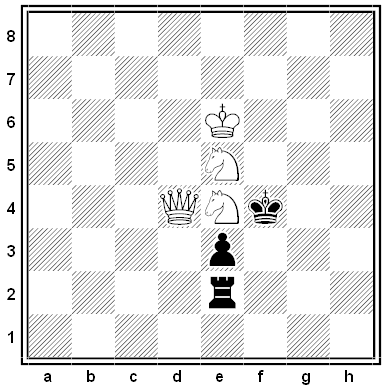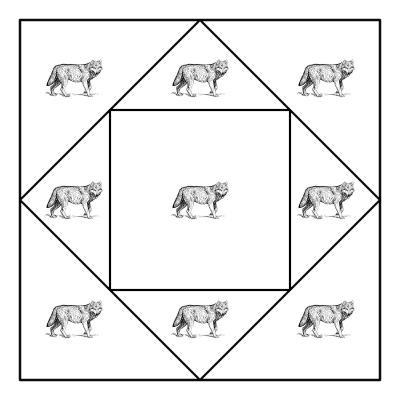Author: Greg Ross
One Solution
Excerpt from the 1791 will of an English gentleman who had been sent unwillingly to live in Tipperary:
I give and bequeath the annual sum of ten pounds, to be paid in perpetuity out of my estate, to the following purpose. It is my will and pleasure that this sum shall be spent in the purchase of a certain quantity of the liquor vulgarly called whisky, and it shall be publicly given out that a certain number of persons, Irish only, not to exceed twenty, who may choose to assemble in the cemetery in which I shall be interred, on the anniversary of my death, shall have the same distributed to them. Further, it is my desire that each shall receive it by half-a-pint at a time till the whole is consumed, each being likewise provided with a stout oaken stick and a knife, and that they shall drink it all on the spot. Knowing what I know of the Irish character, my conviction is, that with these materials given, they will not fail to destroy each other, and when in the course of time the race comes to be exterminated, this neighbourhood at least may, perhaps, be colonized by civilized and respectable Englishmen.
From Virgil McClure Harris, Ancient, Curious and Famous Wills, 1911.
In a Word
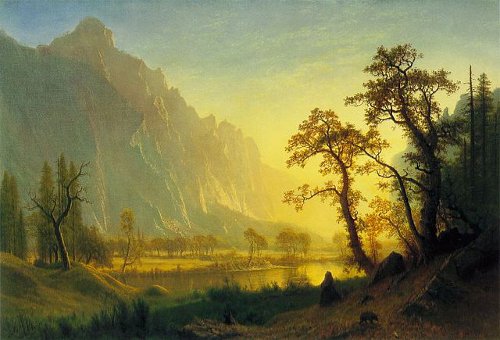
nychthemeron
n. a period of 24 consecutive hours
noctidial
adj. lasting for or comprising a night and a day
A Gum Holster
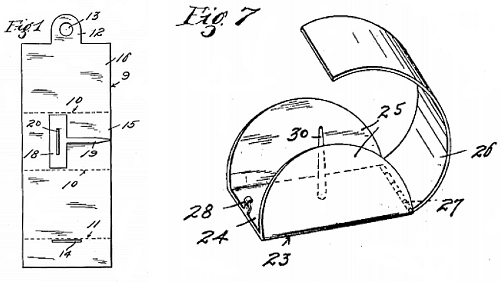
Reva Keston patented this “chewed gum receptacle” in 1949. “It has always been a problem for those addicted to the habit of chewing gum, when tired of chewing, where to store the same until again wanted or as to how to finally dispose of it.” Keston’s solution was a cardboard blank scored for folding: Impale your gum on the barb, fold up the flaps, and you can carry the wad around unstickily until it’s wanted again. “The receptacle may be carried in a purse or pocket or it may be provided with a safety pin for attaching the same to a piece of clothing.”
This would have been handy in Singapore, which has banned chewing gum since vandals began sticking it on the door sensors of MRT trains in the 1990s. No gum can be bought or sold inside the country. “If you can’t think because you can’t chew,” said former prime minister Lee Kuan Yew, “try a banana.”
Separate Quarters
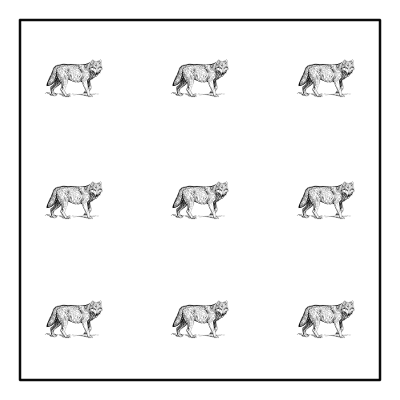
Nine wolves share a square enclosure at the zoo. Build two more square enclosures to give each wolf a pen of its own.
Type Talk

In 1881 Puck published four faces assembled from printing characters and announced that its compositors intended to surpass “all the cartoonists that ever walked.”
Six years later, in an essay entitled “For Brevity and Clarity,” Ambrose Bierce offered a character to make irony clear in written text:
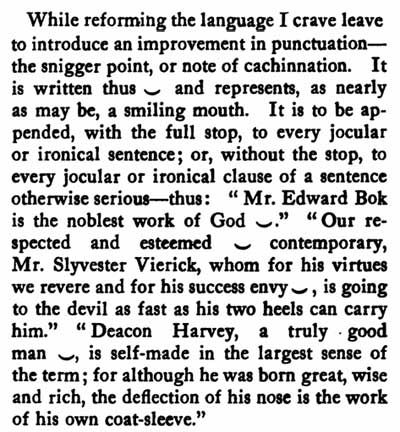
In April 1969, New York Times interviewer Alden Whitman asked Vladimir Nabokov, “How do you rank yourself among writers (living) and of the immediate past?” He answered, “I often think there should exist a special typographical sign for a smile — some sort of concave mark, a supine round bracket, which I would now like to trace in reply to your question.”
(Thanks, Justin.)
Nob’s Number Puzzle

A conundrum by the late brilliant Japanese puzzle maven Nob Yoshigahara.
Lee Sallows writes, “You have to solve this yourself, otherwise you won’t see how beautiful it is.”
Idiom Surfing
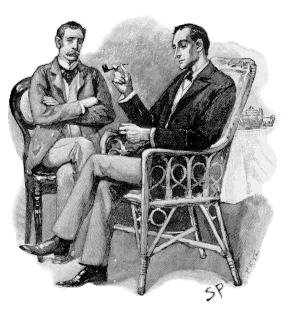
A.B. Cox, in Jugged Journalism (1925), suggested that Arthur Conan Doyle might hand over the writing of a Sherlock Holmes story to P.G. Wodehouse:
Holmes and the Dasher
It was a pretty rotten sort of day in March, I remember, that dear old Holmes and I were sitting in the ancestral halls in Baker Street, putting in a bit of quiet meditation. At least Holmes was exercising the good old grey matter over a letter that had just come, while I was relaxing gently in an arm-chair.
‘What-ho, Watson, old fruit,’ he said at last, tossing the letter over to me. ‘What does that mass of alluvial deposit you call a brain make of this, what, what?’
“The letter announces that Cissie Crossgarters will be rolling round to see jolly old Holmes,” explains Richard Lancelyn Green in The Sherlock Holmes Letters. “It is all dashed rotten and pretty thick, but when Holmes has splashed a little soda into his glass of cocaine, he heaves himself out of his chair and trickles out to her. ‘What ho!’ says Bertie Watson when Holmes returns. Everything is top-hole and the chappie Holmes announces that Cissie and he are engaged to be married.”
Miles Kington once wrote a Holmes adventure in blank verse — it’s called “The Case of the Danish Prince”:
SHER: But here, unless I'm much mistook, comes one
That needs our aid. A case at last!
(Enter to them HAMLET)
HAM: Which one --
SHERL: Of us is Holmes? 'Tis I. This gentle here
Is Watson, my devoted friend and colleague.
HAM: Good morrow to you both. You do not know me --
SHERL: Apart from knowing that you are a prince,
From Denmark, I would hazard, and a solitary,
That you take snuff, have lately been at sea,
Were frightened by a horse at five and now
Are sitting for your portrait, you are a stranger.
WATS: Good heavens, Holmes!
The full text is here.
Black Like Me

In 1959, Dallas journalist John Howard Griffin used drugs and sunlamps to darken his skin and then traveled through Louisiana, Mississippi, Alabama, and Georgia posing as a black man and keeping a diary of his experiences. He found it to be “the story of the persecuted, the defrauded, the feared and the detested.” When he applied for work at a plant in Mobile, the foreman told him, “No, you couldn’t get anything like that here.”
His voice was not unkind. It was the dead voice one often hears. Determined to see if I could break in somehow, I said: ‘But if I could do you a better job, and you paid me less than a white man …’
‘I’ll tell you … we don’t want you people. Don’t you understand that?’
‘I know,’ I said with real sadness. ‘You can’t blame a man for trying at least.’
‘No use trying down here,’ he said. ‘We’re gradually getting you people weeded out from the better jobs at this plant. We’re taking it slow, but we’re doing it. Pretty soon we’ll have it so the only jobs you can get here are the ones no white man would have.’
‘How can we live?’ I asked hopelessly, careful not to give the impression I was arguing.
‘That’s the whole point,’ he said, looking me square in the eyes, but with some faint sympathy, as though he regretted the need to say what followed: ‘We’re going to do our damnedest to drive every one of you out of the state.’
In a Mississippi bus station he felt a “hate stare” that would grow familiar. “It came from a middle-aged, heavyset, well-dressed white man. He sat a few yards away, fixing his eyes on me. Nothing can describe the withering horror of this. You feel lost, sick at heart before such unmasked hatred, not so much because it threatens you as because it shows humans in such an inhuman light. You see a kind of insanity, something so obscene the very obscenity of it (rather than its threat) terrifies you. It was so new I could not take my eyes from the man’s face. I felt like saying: ‘What in God’s name are you doing to yourself?'”
Podcast Episode 7: Louisiana Hippos, Imaginary Epidemics, and Charles Lindbergh
Two weeks before Charles Lindbergh’s famous flight, a pair of French aviators attempted a similar feat. Their brave journey might have changed history — but they disappeared en route. In this week’s episode of the Futility Closet podcast we’ll follow the flight of the “White Bird” — and ponder what became of it.
We’ll also examine a proposal to build hippo ranches in the Louisiana bayou in 1910, investigate historical outbreaks of dancing, laughing, and other strange behavior, and present the next Futility Closet challenge.

